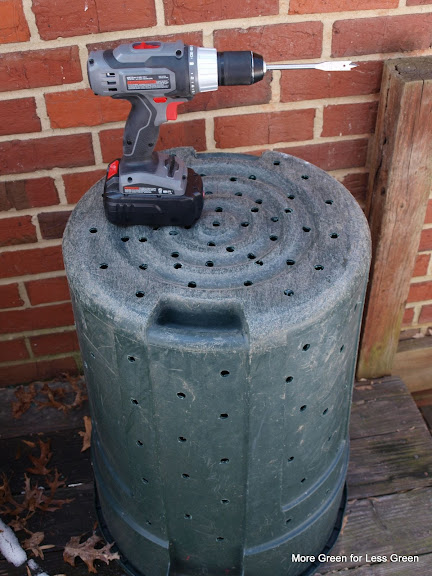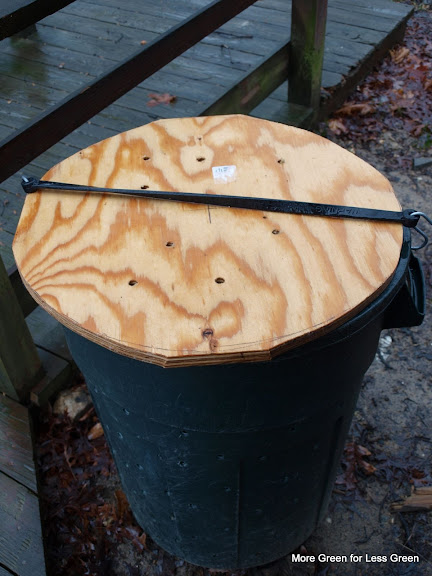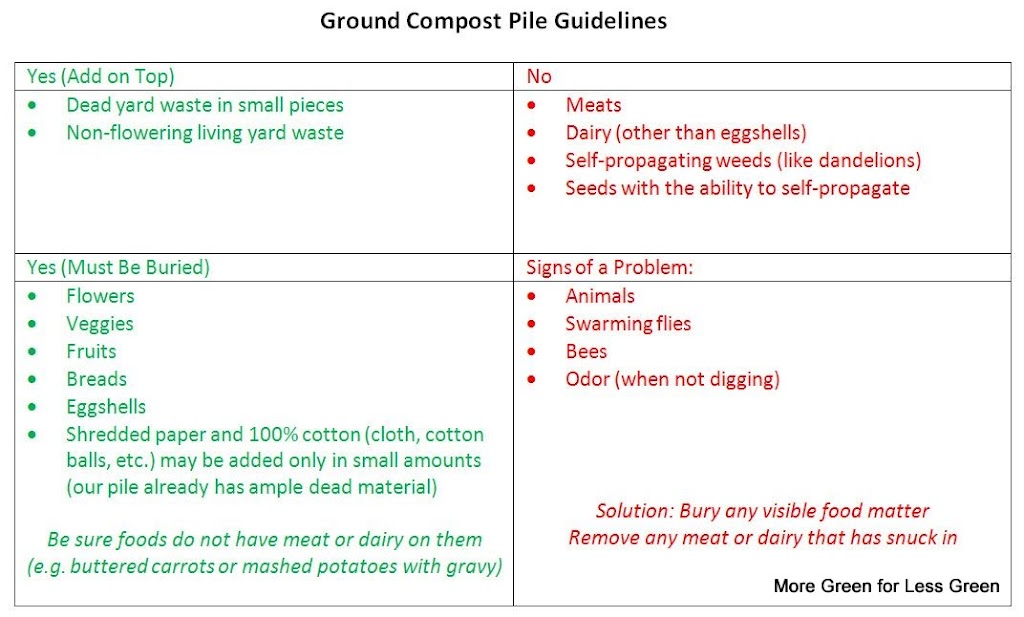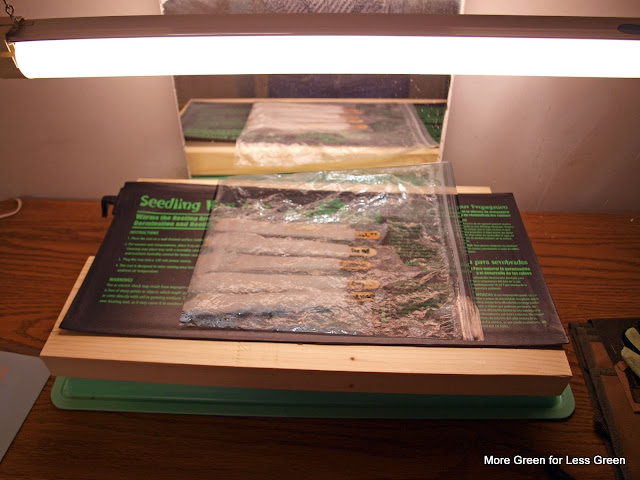In the past, I have kept a simple compost pile on the ground, with good results. When we lived in the condo, I composted on the grounds at work (read about it
here and
here). Decomposition went very well, but the compost never actually got used. Last spring, my coworker on the buildings team accidentally squished all of the compost back into the forest floor in a mishap with a rented tractor. (I think he was either trying to turn the pile or scoop up the compost to use it.)
When we bought the house, I started a ground pile at home and ditched the work one. That reminds me, that partial second year of compost is still sitting on work grounds and decomposing. I guess I should remind my coworker that it is there since it is time for spring planting to spruce up the grounds. It would be great to see it put to use! Anyway, back to the house pile...being that I started the pile in in December and then we had a snowy winter, the pile didn't do much.
When we moved into the house, I noticed that the previous owners left an old, beat-up, plastic trashcan with no lid. I started eyeing it as a potential composter. After all, if it could be free—or at least dirt cheap—I’d like to try bin composting. I totally believe in the simplicity and relative cleanliness of a ground pile, but I like experiments, and I like sharing them with you.
It took me some time to figure out exactly what to do with the trash can and to find the time to do it, but I finally did. Here you go...
With a ½ inch boring bit, I drilled holes around the sides and bottom of the trash can. As you may notice, I did not drill holes up to the very top of can. I did this for several reasons: to remind me to not fill it that high for weight reasons (I need to be able to flip it); to remind me to get multiple bins going for use at different times and not obsess over getting this one filled to the brim; and finally, some trashcan composters are used upside down with the top cut off, so instead of flipping it, you just lift it up. I wanted to leave as much structural integrity in that part of the can as possible in case I switch to that method.

Because the trash can did not have a lid, and we were not able to buy just a lid, we needed to make one. We recently got some building supplies from a Freecycler, so hubby cut some of that wood to be the lid. I then drilled holes in the wood to allow rain in. We bought a rubber cord with hooks on the end (from Home Depot) to hold the lid on securely.

I shoveled my ground pile into the composter, and I will turn it with a
cultivator/claw. We bought both tools on Craigslist for $10 each.
So far, I’ve noticed that flying bugs like the composter. This was not a problem with the ground pile because no food was ever directly exposed to the air (it gets covered with browns). In the container, food may be pressed against a hole and thus draw attention. So far, that is the only drawback. In terms of adding food, it is much easier because I don’t have to dig it in and then obsessively cover it with browns. So, we'll see how it goes!
Labels: Composting, Crafty












